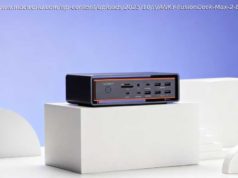Google just shattered the limits of what a smart speaker can be — and its once-ho-hum Home product is about to redefine the market.
Remember last week, when Amazon added „calling capabilities“ into its Echo smart speaker?
Yeah…that was cute.
At the keynote of its Google I/O developers‘ conference Wednesday, Google announced a handful of updates to its Google Home smart speaker — and these are no incremental improvements. The updates collectively transform the device from a sometimes-useful novelty into a powerful productivity tool — one that holds practical appeal for both the home and the workplace, and one that makes Amazon’s little gizmo look like child’s play.
Huh. Who woulda thunk?
Google Home’s calling system can either use a private number or have the calls originate from your own regular mobile digits. Aside from that (optional) choice, Google says there’s no setup required and no need to use any special app or connection; all you’ve gotta do is tell Home to make a call, and it’ll start dialing.
Not too shabby, right?
Cool factor aside, though, stop for a second and think about just how valuable such a setup could be. Even if you forget about all its other home control and Assistant-oriented features, Google Home is now a self-contained speakerphone system — one with a really good and impressively loud speaker, yes, but more significantly one that can make calls from a private number or your own number simply by being plugged into any ol‘ electrical outlet. And it can work intelligently for multiple people in a way that almost seems like science fiction.
On the home front, that gives you an insanely convenient way to make high-quality hands-free calls without having to have your phone nearby or use up any of your precious mobile minutes (assuming you’re on a plan that isn’t unlimited) . And on the business side of the equation — especially within the small business realm — it offers an affordable option for putting a ready-to-roll speakerphone in any office without any wiring hassles or ongoing fees. In either scenario, you could make the calls personalized or anonymous, depending on your needs.
Calls aside, the newly announced upgrade will bring Home a handful of other interesting flourishes. First, Home devices will soon harness your existing smartphone and TV screens to provide visual accompaniments to responses, as appropriate — sending directions to your phone when you ask about the location of a business, for instance, or showing your calendar on a Chromecast-connected TV when you ask to see your agenda. It’s a clever and very Googley way to accomplish what Amazon could do only by creating an entirely new (and rather clunky-looking) product.
Home will also soon gain what Google calls a „proactive assistance“ feature. In short, the device will flash its lights when a timely and important message awaits — like a pending reminder, a traffic delay relevant to your day at any given moment, or a status change for a flight you’ve booked (assuming you have the itinerary saved in your Gmail account, where Google can see it) . When you see the lights flashing, you simply say „Hey Google, what’s up?“ to get the info.
Last week, I said that Amazon had raised the stakes with its launch of the screen-packing and limited-„call“-making Echo Show device — and it certainly did. But with this week’s Home announcements, Google just catapulted itself into a completely different league of product.
For the first time, the smart speaker is looking less like a toy and more like a versatile and valuable appliance. And if the pace of improvements Google’s kept up over these first six months is any indication, what we’re seeing now is almost certainly just the start.






